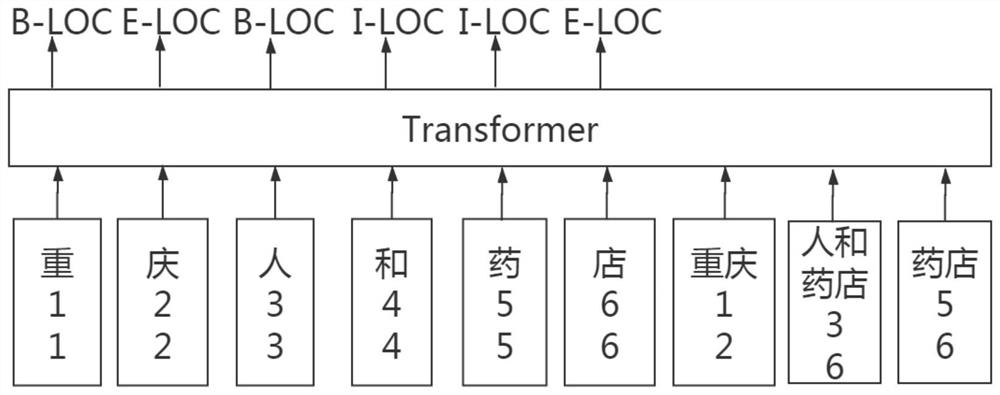BERT-FLAT-based Chinese named entity recognition method
A named entity recognition and entity recognition technology, applied in character and pattern recognition, instruments, biological neural network models, etc., can solve the problems of not representing ambiguity and not using lexical information.
- Summary
- Abstract
- Description
- Claims
- Application Information
AI Technical Summary
Problems solved by technology
Method used
Image
Examples
Embodiment Construction
[0051]The technical solutions in the embodiments of the present invention will be clearly and completely described below in conjunction with the accompanying drawings in the embodiments of the present invention. Obviously, the described embodiments are only a part of the embodiments of the present invention, rather than all the embodiments. Based on the embodiments of the present invention, all other embodiments obtained by those of ordinary skill in the art without creative work shall fall within the protection scope of the present invention.
[0052]Such asfigure 1 As shown, a Chinese named entity recognition method based on BERT-FLAT includes but not limited to the following steps:
[0053]S1. Data set preprocessing, to obtain a preprocessed data set, and divide the preprocessed data set into a training set, a validation set, and a test set.
[0054]The original data set adopts the MSRA Chinese named entity recognition data set of Microsoft Research Asia. The data set contains 50,000 piec...
PUM
 Login to View More
Login to View More Abstract
Description
Claims
Application Information
 Login to View More
Login to View More - R&D
- Intellectual Property
- Life Sciences
- Materials
- Tech Scout
- Unparalleled Data Quality
- Higher Quality Content
- 60% Fewer Hallucinations
Browse by: Latest US Patents, China's latest patents, Technical Efficacy Thesaurus, Application Domain, Technology Topic, Popular Technical Reports.
© 2025 PatSnap. All rights reserved.Legal|Privacy policy|Modern Slavery Act Transparency Statement|Sitemap|About US| Contact US: help@patsnap.com



